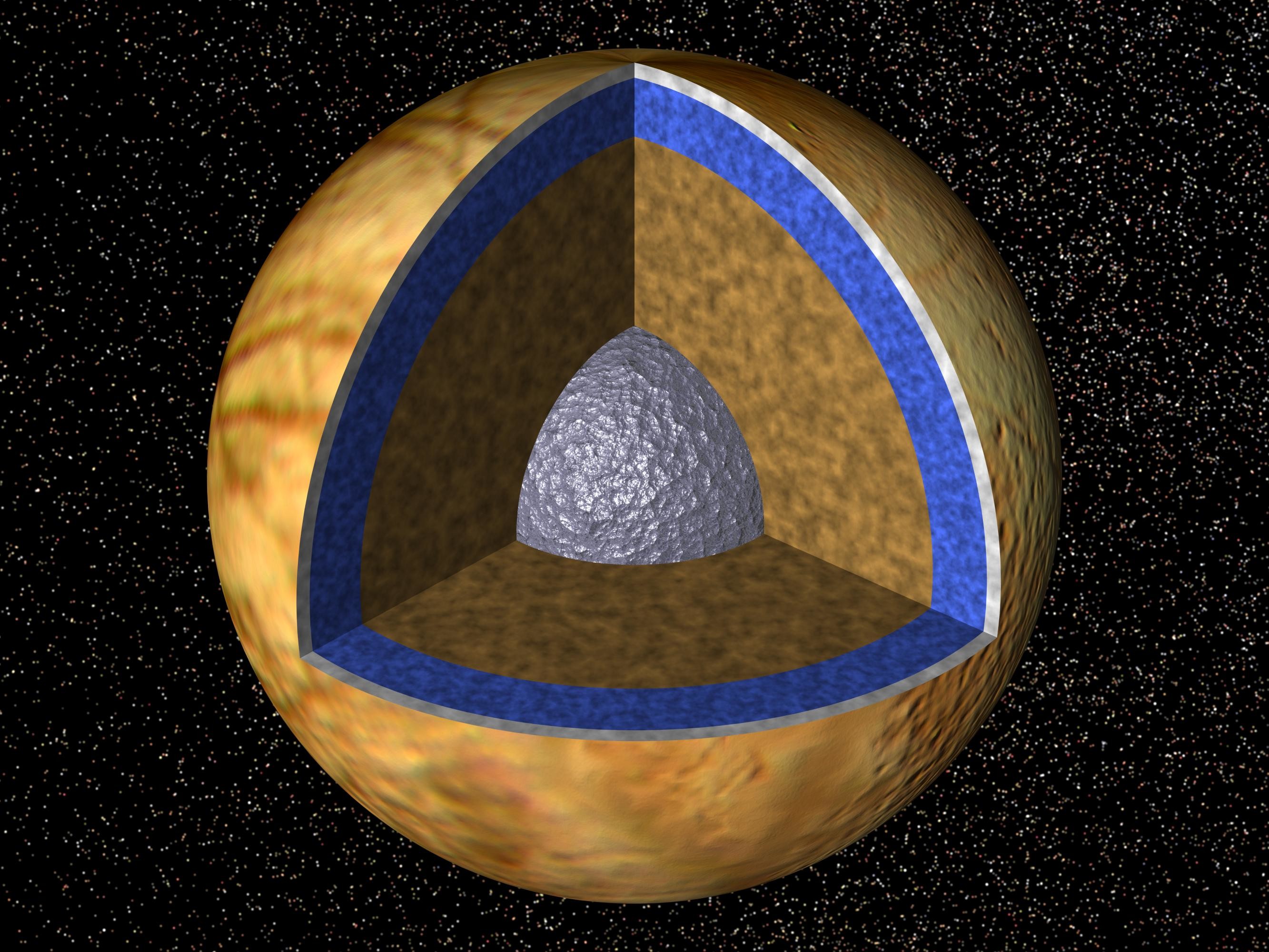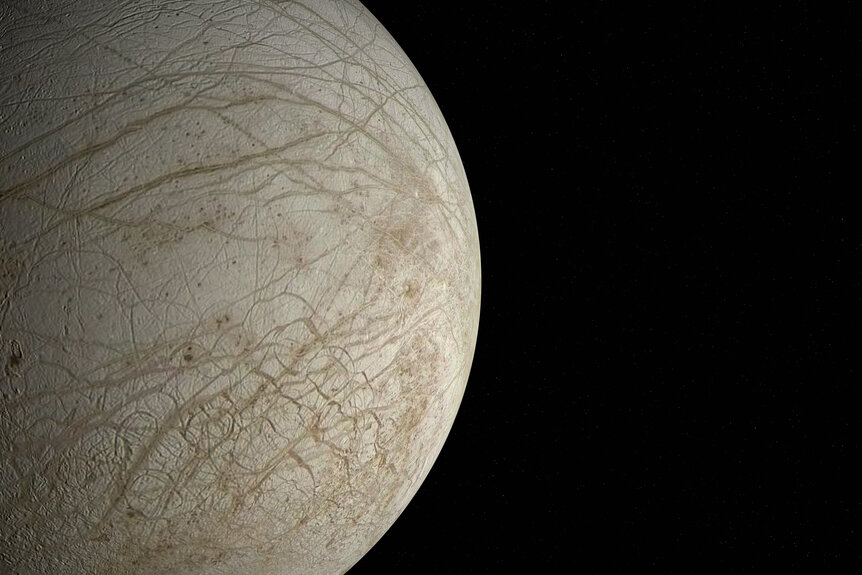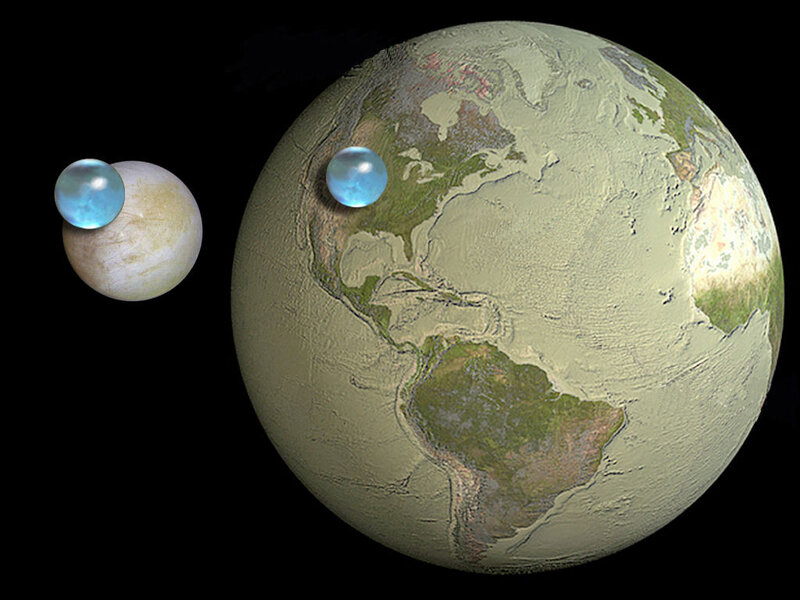Create a free profile to get unlimited access to exclusive videos, sweepstakes, and more!
Jupiter's moon Europa is getting salty
Table salt all but confirmed on its surface.

Well, this is very cool news: Astronomers have pretty much confirmed the presence of sodium chloride — table salt — on the surface of Jupiter’s moon Europa!
This is cool for many reasons [link to paper], but the main one is that the most likely source of this salt is the presence of a huge ocean of liquid water under the surface of the moon. Europa’s density indicates it’s made of a mix of rock, most likely in the form of a rocky core with some iron and nickel at the very center, and water ice, which we see on its surface. But that ice may not go all the way down to its core; tides from Jupiter heat the moon up considerably, enough to melt a lot of that water. This subsurface ocean is hidden by a shell of ice many kilometers thick, but there are various ways it can seep up to the surface.
In 2019, a team of astronomers found evidence of table salt on Europa’s surface. Spectra of the surface of the moon taken using Hubble found a weird feature at a wavelength around 450 nanometers — a dip in the spectrum indicating some molecule was present absorbing blue-green light. Speculating it might be sodium chloride, they turned to the lab to irradiate table salt to mimic exposure to Jupiter’s radiation environment, as it would be on Europa’s surface. Lo and behold, they found it absorbed light at 450 nm!
The new news is that they followed up with more spectra and found another absorption feature, this one at 230 nm, in the ultraviolet. This feature is also seen in their lab-zapped salt, which is supportive of the idea that’s what they’re seeing on Europa. Not only that, but it’s seen in the same spots on the moon’s surface, which is further evidence.
That’s why I wrote this is “pretty much confirmed.” It’s not 100% but it’s awfully convincing.
Why is this cool? Because we don’t really know the details of that liquid water Europan ocean under the ice. It might be pure water, but if the core of Europa is rocky, that means there’s an ocean floor in contact with it. On Earth, minerals from the crust mix with the ocean water, making it salty. The same thing would likely happen under Europa, so finding evidence of salt implies a similar thing is happening there.
There’s also the notion that tidal squeezing from Jupiter can drive tectonic forces in Europa’s core, creating cracks from which deeper, hotter chemicals could spew. If that sounds familiar, well yeah, look up hydrothermal vents on Earth. These blart out chemicals noxious to humans, but deep-sea creatures love ‘em. And they provide heat and energy, so if these vents exist on Europa, they’re a great place to look for little alien fishies and such.
That’s very interesting indeed.
And while the idea of Europan critters is fascinating, it’ll be a long while before we get any direct evidence for or against them. However, NASA is currently building a mission called Europa Clipper, which is designed to orbit Jupiter and dip close to Europa dozens of times, surveying it for potential habitability. Not to see if it’s inhabited, but to see if conditions there are ripe for life. Actually landing and maybe, somehow, probing the interior ocean is a whole other level of difficulty, and will be planned for a future mission. But the amount we’ll learn about the Earth-Moon-sized-moon will be immense.
In the meantime, continuing to observe Europa from Earth will help inform the mission itself, which has a planned launch in late 2024 for a 2030 arrival at Jupiter. Europa is an amazing, dynamic, and interesting place, as well as terribly beautiful to boot. I can’t wait to see the images from Clipper, and to learn what it has to teach us.




























